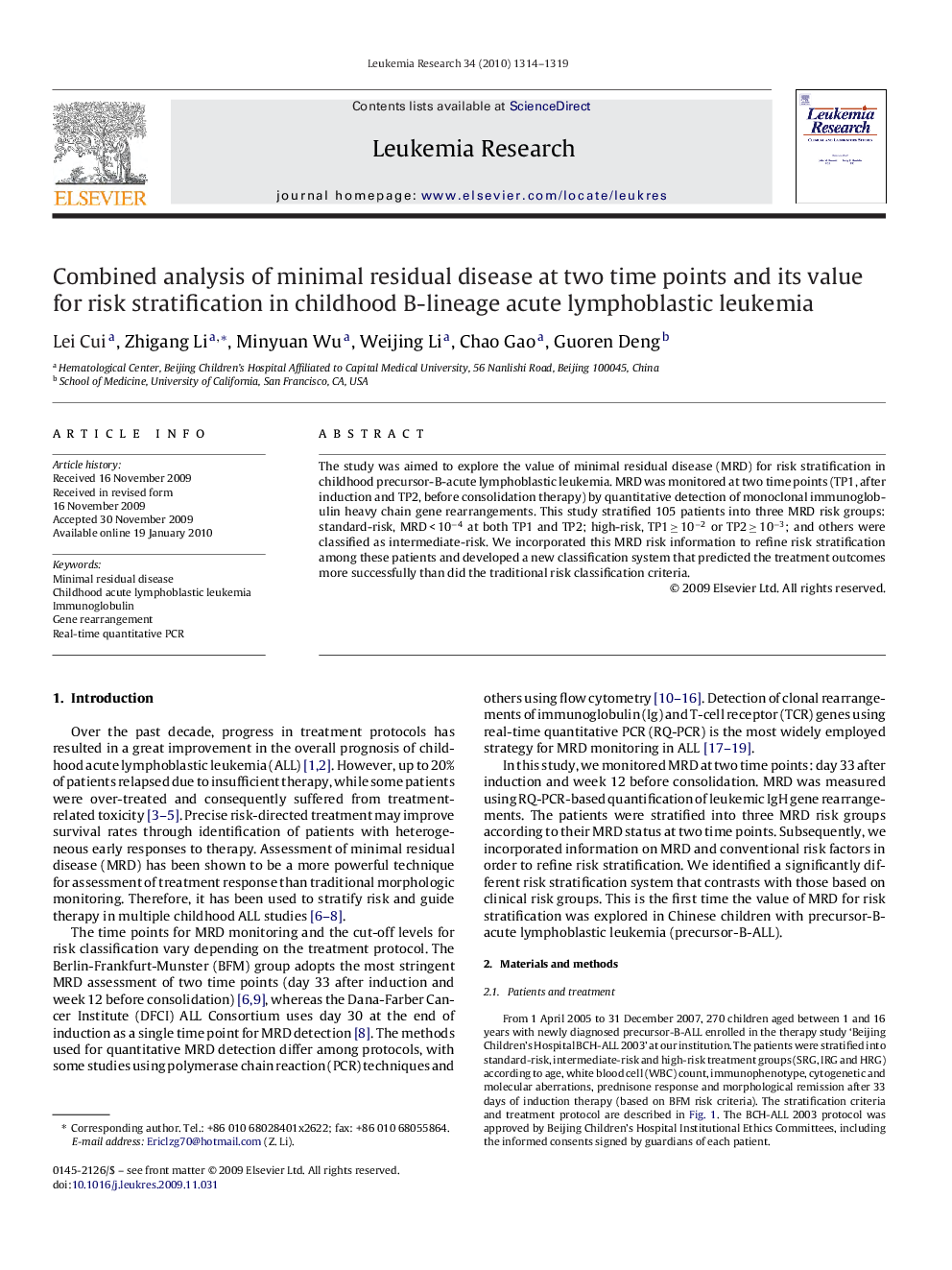| Article ID | Journal | Published Year | Pages | File Type |
|---|---|---|---|---|
| 2138274 | Leukemia Research | 2010 | 6 Pages |
The study was aimed to explore the value of minimal residual disease (MRD) for risk stratification in childhood precursor-B-acute lymphoblastic leukemia. MRD was monitored at two time points (TP1, after induction and TP2, before consolidation therapy) by quantitative detection of monoclonal immunoglobulin heavy chain gene rearrangements. This study stratified 105 patients into three MRD risk groups: standard-risk, MRD < 10−4 at both TP1 and TP2; high-risk, TP1 ≥ 10−2 or TP2 ≥ 10−3; and others were classified as intermediate-risk. We incorporated this MRD risk information to refine risk stratification among these patients and developed a new classification system that predicted the treatment outcomes more successfully than did the traditional risk classification criteria.
